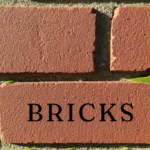Dhajji Dewari an age-old method of construction technique, translating to “patchwork wall” in Farsi, has served the people of Kashmir for centuries, offering not just beauty but also the requisite strength against the region’s frequent earthquakes. The majestic Himalayas hold a wealth of cultural heritage, within which lies this remarkable Dhajji Dewari construction technique too.
A Legacy of Earthquake Resistance
Kashmir’s history is interwoven with seismic activity. In response, Dhajji Dewari has emerged as a sustainable and life-saving architectural marvel. Unlike conventional brick-and-mortar structures, Dhajji Dewari employs a flexible timber frame filled with infill panels of stone or brick. This ingenious design allows the structure to sway during tremors, dissipating the earthquake’s energy rather than succumbing to its force.
The devastating 2005 Kashmir earthquake serves as a stark testament to Dhajji Dewari’s effectiveness. While modern concrete buildings crumbled, many Dhajji Dewari structures remained remarkably intact, showcasing the wisdom behind this traditional technique.
Unveiling the Dhajji Dewari Technique
Dhajji Dewari construction is a beautiful interplay of local materials and skilled craftsmanship. Here’s a breakdown of its key elements:
- Foundation: Strong and stable foundations are laid using locally sourced stone, cement, and timber. This ensures the structure can withstand the weight of the building and resist tremors.
- Timber Frame: The heart of Dhajji Dewari lies in its timber framework. Skilled artisans meticulously select and treat seasoned wood, creating a network of vertical posts and horizontal beams. This framework provides the structure’s flexibility and strength.
- Infill Panels: The timber frame is then filled with infill panels, traditionally crafted from stone or brick. These panels are typically smaller in size, creating the characteristic “patchwork” aesthetic. Mud mortar acts as a binder, holding the infill panels securely within the frame.
- Roofing: Traditional Dhajji Dewari structures often feature flat roofs constructed with timber and mud. However, variations exist, with some incorporating gabled or hipped roofs for added stability.
- Mud Plaster: As a finishing touch, the walls are plastered with a mud mix, offering a smooth and weatherproof exterior. This natural material also contributes to the overall thermal insulation of the building.
Beyond Earthquake Resilience: Advantages of Dhajji Dewari
The brilliance of Dhajji Dewari construction extends far beyond its earthquake resistance. Here are some additional benefits:
- Sustainability: Dhajji Dewari prioritizes local, readily available materials like wood, stone, and mud. This minimizes transportation costs and environmental impact.
- Energy Efficiency: The thick mud walls and traditional roofs offer excellent natural insulation, keeping interiors cool in summer and warm in winter. This translates to reduced energy consumption for heating and cooling.
- Skilled Craftsmanship: Dhajji Dewari construction relies on the expertise of local artisans. It fosters traditional knowledge and promotes local economies.
- Aesthetics and Cultural Significance: Dhajji Dewari structures possess a unique charm, blending seamlessly with the breathtaking Kashmiri landscape. They represent a living testament to the region’s rich cultural heritage.
Modernization and the Future of Dhajji Dewari
While the traditional brilliance of dhajji dewari construction is undeniable, the need for it’s modernization still exists. Here’s how this time-tested technique is being adapted for the future:
- Incorporation of Modern Materials: Engineers are exploring the use of galvanized wire mesh or reinforced earth within the infill panels for enhanced strength.
- Improved Seismic Design: Engineers are studying the Dhajji Dewari framework and incorporating modern seismic design principles to further optimize its earthquake resistance.
- Focus on Sustainability: Sustainable practices like using recycled wood or incorporating solar panels are being explored for a more environmentally friendly approach.
These advancements, coupled with the preservation of traditional knowledge, can ensure Dhajji Dewari continues to serve Kashmiris for generations to come.
Preserving a Legacy: The Importance of Dhajji Dewari
In a world increasingly dependent on concrete jungles, Dhajji Dewari system offers a valuable lesson in sustainable, earthquake-resistant construction. Here’s why its preservation is very much important:
- Disaster Preparedness: By understanding and incorporating Dhajji Dewari principles into modern construction techniques, vulnerable regions worldwide, having a bitter history, can be better prepared for earthquakes.
- Cultural Heritage: Dhajji Dewari embodies the ingenuity and resilience of the Kashmiri people. Preserving this technique safeguards a vital part of the region’s cultural identity.
- Sustainable Building Practices: Dhajji Dewari’s emphasis on local materials and energy efficiency serves as a model for sustainable building practices in the face of climate change.
Dharji Dewari: Challenges and The Road Forward
Despite its undeniable merits, Dhajji Dewari construction faces some challenges in the contemporary world. Here’s a look at the roadblocks and potential solutions:
- Skilled Labor Shortage: With rapid urbanization, the number of skilled artisans well-versed in Dhajji Dewari techniques is dwindling. Efforts to revive traditional building apprenticeships and incentivize young people to learn this craft are crucial.
- Limited Scalability: While Dhajji Dewari is perfect for smaller structures, its scalability for high-rise buildings is limited. Research into adapting the core principles for larger constructions can bridge this gap.
- Competing with Modern Materials: Modern construction materials like concrete and steel are often perceived as faster and more economical. Highlighting Dhajji Dewari’s long-term cost-effectiveness, environmental benefits, and cultural significance can counter this perception.
- Building Code Integration: Integrating Dhajji Dewari principles into building codes can ensure its wider adoption in new constructions. This requires collaboration between architects, engineers, and policymakers.
Showcasing Dhajji Dewari: Initiatives and Inspiration
Several initiatives are underway to preserve and promote Dhajji Dewari:
- Restoration Projects: Government and private organizations should work on restoring heritage Dhajji Dewari structures in Kashmir, showcasing their enduring beauty and functionality.
- Educational Programs: Workshops and training programs need to be conducted to revive traditional Dhajji Dewari construction knowledge and empower a new generation of artisans.
- Architectural Competitions: Competitions that encourage innovative adaptations of Dhajji Dewari principles for modern buildings can inspire a new wave of sustainable and earthquake-resistant architecture.
- Promoting Eco-Tourism: Highlighting the cultural and architectural significance of Dhajji Dewari can attract tourists interested in sustainable and heritage-based travel. This can generate revenue to support preservation efforts.
Conclusion: Dhajji Dewari – A Model for the Future
Dhajji Dewari system stands as a testament to human ingenuity and adaptation. As the world grapples with climate change and the increasing frequency of natural disasters, Dhajji Dewari’s principles offer valuable insights for sustainable and resilient construction. By embracing its legacy, integrating modern advancements, and fostering skilled craftsmanship, Dhajji Dewari can continue to serve Kashmir and inspire the world for generations to come.
By understanding and appreciating Dhajji Dewari, we can not only safeguard a remarkable architectural tradition but also pave the way for a more sustainable and resilient future for our built environment.
Read also: Construction of Gabion Retaining walls





